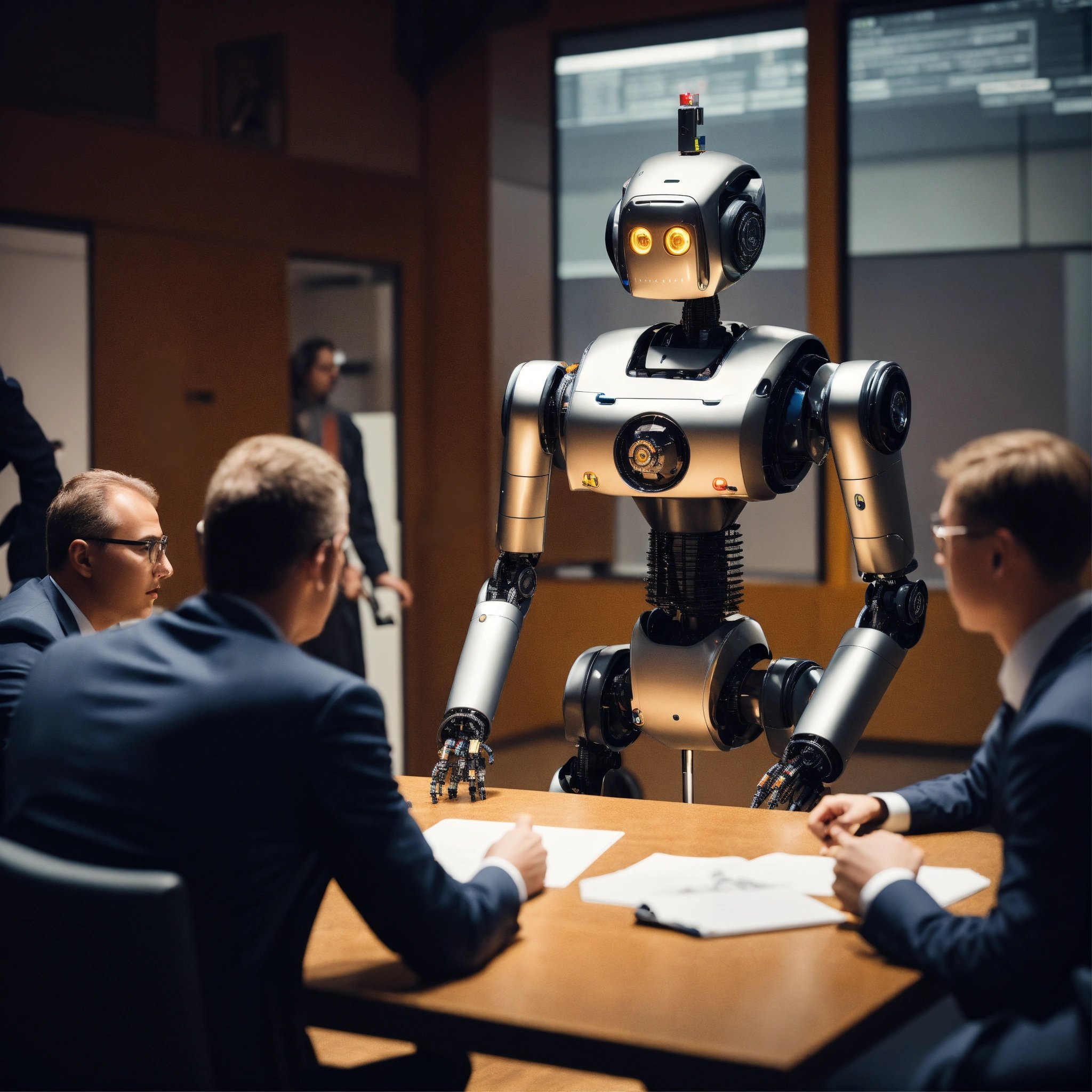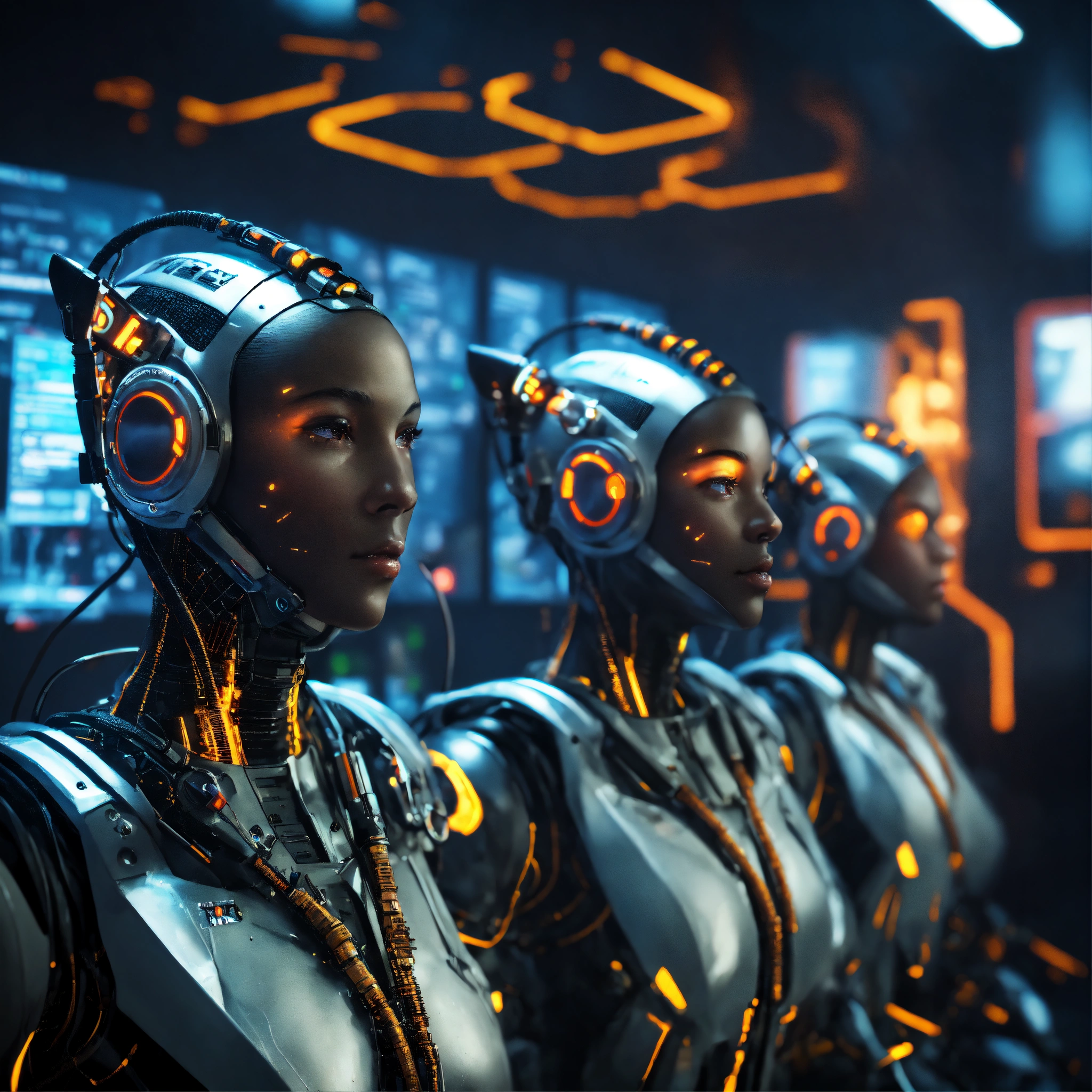Over the years, artificial intelligence (AI) and robotics have evolved independently, but their intersection is shaping the future of technology. This informative piece probes into how these innovative technologies are coming together to create smarter machines with enhanced capabilities and functionalities. From autonomous vehicles to sophisticated manufacturing processes, this article explores the exciting advancements at the intersection of AI and robotics and the implications for society.
Key Takeaways:
- AI and Robotics collaboration: The integration of artificial intelligence with robotics is leading to the development of smarter machines that can perform various tasks with greater precision and efficiency.
- Enhanced capabilities: By combining AI algorithms with robotic systems, machines are becoming more adept at learning, adapting, and making decisions on their own, thereby increasing their overall effectiveness.
- Impact on industries: The intersection of AI and robotics is revolutionizing industries such as manufacturing, healthcare, and transportation by introducing advanced automation and intelligent machines that can streamline processes and improve productivity.
The Evolution of AI and Robotics
Historical Development of AI
One of the earliest instances of AI can be traced back to the 1950s, with the development of the first neural networks. Over the years, AI has evolved significantly, with milestones such as the creation of expert systems in the 1970s and the introduction of machine learning algorithms in the 1990s. These advancements paved the way for the integration of AI into various fields, including robotics.
Advances in Robotics Technology
The field of robotics has made remarkable strides in recent years, with robots transitioning from controlled environments to more complex, unstructured settings. The utilization of AI has played a crucial role in this advancement, enabling robots to adapt to changing conditions and interact with their surroundings more effectively. Robots are now being designed to perform tasks that were once deemed too dangerous or intricate for humans, showcasing the potential of AI-powered machines in enhancing productivity and safety.
Historical breakthroughs in robotics technology have opened up new possibilities for the collaboration between AI and robotics, leading to the development of smarter machines that can learn from their experiences and improve their performance over time.
The Convergence of AI and Robotics
AI-Driven Robotics
Clearly, the convergence of artificial intelligence (AI) and robotics has paved the way for the development of smarter machines. AI-driven robotics refers to the integration of advanced algorithms and machine learning techniques into robotic systems, enabling them to perform tasks with more autonomy and efficiency than ever before.
Any robot equipped with AI capabilities can adapt to changing environments, learn from experience, and make decisions in real-time. This has led to significant advancements in various industries, from manufacturing and healthcare to agriculture and transportation. The potential for increased productivity, precision, and cost savings makes AI-driven robotics a transformative technology shaping the future of automation.
Robotics-Enhanced AI
On the other hand, robotics-enhanced AI focuses on utilizing robotic platforms to enhance the capabilities of AI systems. By incorporating physical agents into AI research, scientists and engineers can explore complex scenarios that require interactions with the physical world.
The synergy between robotics and AI is enabling breakthroughs in areas such as human-robot collaboration, autonomous navigation, and intelligent manipulation of objects. Robots are providing valuable data and insights that enrich AI algorithms, leading to more robust and adaptable systems capable of tackling challenging tasks in dynamic environments.
Building Smarter Machines
Integrating AI and Robotics
Unlike traditional robots that rely on pre-programmed instructions to perform tasks, the integration of Artificial Intelligence (AI) with robotics allows machines to learn from and adapt to their environment. This merging of AI and robotics enables machines to make decisions, solve problems, and interact with the world in a more autonomous and intelligent manner. By incorporating AI algorithms, robots can analyze data, recognize patterns, and make real-time adjustments to optimize their performance.
Creating Autonomous Systems
With advancements in AI and robotics, creating autonomous systems has become a reality. These systems are capable of operating independently, making decisions without human intervention, and adapting to changing conditions in real-time. By leveraging sensors, cameras, and other technologies, autonomous machines can perceive their surroundings, navigate through complex environments, and carry out tasks with precision.
Any industry that can benefit from automation, such as manufacturing, agriculture, healthcare, and transportation, can leverage autonomous systems to streamline processes, increase efficiency, and reduce human error. These machines have the potential to revolutionize various sectors by enhancing productivity and safety.
Enhancing Machine Learning Capabilities
Enhancing machine learning capabilities in robots involves training algorithms to improve performance and decision-making over time. By incorporating techniques such as reinforcement learning and deep learning, machines can acquire new skills, adapt to changes, and continuously enhance their capabilities. This iterative learning process enables robots to become more efficient, accurate, and versatile in performing a wide range of tasks.
To stay competitive in the rapidly evolving landscape of AI and robotics, organizations must invest in research and development to enhance machine learning capabilities. By continuously refining algorithms, collecting and analyzing data, and integrating feedback loops, machines can achieve higher levels of intelligence and autonomy.
Applications of AI-Driven Robotics
Industrial Automation
For industrial automation, AI-driven robotics play a crucial role in streamlining manufacturing processes, increasing efficiency, and reducing errors. With the integration of AI technologies, robots can now perform complex tasks with precision and speed, ultimately boosting production output. These machines are equipped with sensors and cameras that allow them to adapt to different situations on the factory floor, making them invaluable assets in modern manufacturing plants.
Healthcare and Medical Robotics
Any advancements in healthcare and medical robotics have revolutionized the way surgeries are performed, diagnoses are made, and patient care is delivered. AI-powered robots can assist surgeons during procedures, analyze medical images for more accurate diagnosis, and even provide physical therapy to patients in need. These robots can access areas of the human body that are difficult for human hands to reach, enhancing the precision and safety of medical treatments.
To further improve patient outcomes, AI-driven medical robots are being developed to autonomously perform routine tasks, freeing up healthcare professionals to focus on more critical aspects of patient care. These robots can help hospitals operate more efficiently and provide better services to patients, ultimately enhancing the overall quality of healthcare delivery.
Service Robotics and Customer Experience
Robotics in service industries are transforming customer experiences by providing personalized services and enhancing operational efficiency. AI-driven robots are being deployed in sectors such as retail, hospitality, and entertainment to interact with customers, provide recommendations, and streamline service delivery. These robots are designed to be intuitive and user-friendly, ensuring a seamless interaction between humans and machines.
It is crucial to note that the integration of AI and robotics in service industries can lead to job displacement for certain roles. However, this technological advancement also opens up new opportunities for skill development and job creation in fields related to robot maintenance, programming, and customer service management.
Challenges and Limitations
Technical Hurdles
After making significant advancements in AI and robotics, there are still several technical hurdles to overcome. One of the major challenges is developing machines that can adapt and learn in real-time scenarios. Another challenge is ensuring that AI systems have the capability to understand human commands accurately and execute tasks efficiently.
Ethical Considerations
With the rise of AI and robotics, ethical considerations have become increasingly important. Any technology that operates autonomously raises questions about responsibility and liability in the event of accidents or errors. Another concern is the potential impact of automation on the workforce, leading to job displacement and economic inequality.
With the rapid advancement of AI and robotics, it is crucial to consider the ethical implications of integrating these technologies into various aspects of society. Any decisions made regarding the use of AI and robotics must prioritize the well-being and safety of individuals, as well as address concerns related to privacy and security.
Regulatory Frameworks
Regulatory frameworks play a crucial role in addressing the challenges posed by AI and robotics. Another hurdle is the lack of standardized regulations to govern the development and deployment of these technologies. To ensure the safety and ethical use of AI and robotics, strong regulations must be established to set guidelines for design, testing, and implementation.
Regulatory frameworks are vital to the responsible advancement of AI and robotics. Any regulatory decisions must carefully consider the potential risks and benefits associated with these technologies, ultimately aiming to promote innovation while prioritizing the protection and well-being of society.
Future Directions and Opportunities
Advancing AI and Robotics Research
To further push the boundaries of AI and robotics, researchers are focusing on developing more sophisticated algorithms that can enhance machine learning capabilities. Any breakthroughs in this area could lead to machines that can adapt and learn in real-time, making them more efficient and versatile in various tasks. Additionally, advancements in sensor technologies and data processing are crucial to improving the perception and decision-making abilities of robots.
Expanding Applications and Industries
On the horizon are opportunities for AI and robotics to revolutionize industries beyond manufacturing and healthcare. Fields such as agriculture, transportation, and even entertainment are ripe for disruption by smart machines. Applications in autonomous vehicles, precision farming, and collaborative robots in theme parks are just the beginning of a new wave of innovation.
With the integration of AI, robots are becoming more intelligent and capable of handling complex tasks in unstructured environments. Another exciting development is the potential for robots to work alongside humans in a collaborative manner, augmenting human capabilities and improving productivity.
To wrap up
Considering all points, the intersection of AI and robotics is rapidly advancing the capabilities of machines to think, learn, and adapt to their environment. By combining the power of artificial intelligence with robotics, we are paving the way for smarter machines that can revolutionize industries, improve efficiency, and enhance our daily lives.
As we continue to push the boundaries of technology, it is important to explore the ethical implications and ensure that these advancements are used for the betterment of society. By fostering a collaborative and responsible approach to developing AI and robotics, we can harness their full potential and create a future where intelligent machines work harmoniously alongside humans.
FAQ
Q: What is the intersection of AI and robotics?
A: The intersection of AI and robotics refers to the merging of artificial intelligence (AI) with robotics to create smarter machines that can perform tasks autonomously and adapt to changing environments. By combining AI algorithms with robotic hardware, we can develop machines that have the ability to learn, make decisions, and interact with the world around them.
Q: How do AI and robotics work together to build smarter machines?
A: AI enables robots to interpret data from sensors, make decisions, and learn from their experiences. Robotics provides the physical platform for AI algorithms to interact with the environment, through mechanisms like actuators, sensors, and manipulators. By integrating AI and robotics, we can design machines that are not only intelligent but also capable of performing complex tasks with precision and efficiency.
Q: What are some examples of applications of AI and robotics in building smarter machines?
A: Some examples of applications include autonomous vehicles that use AI algorithms to navigate and make driving decisions, robotic arms in manufacturing that use AI for object recognition and manipulation, and drones equipped with AI for surveillance and data analysis. The synergy between AI and robotics continues to drive innovation in various industries, leading to the development of increasingly sophisticated and intelligent machines.





